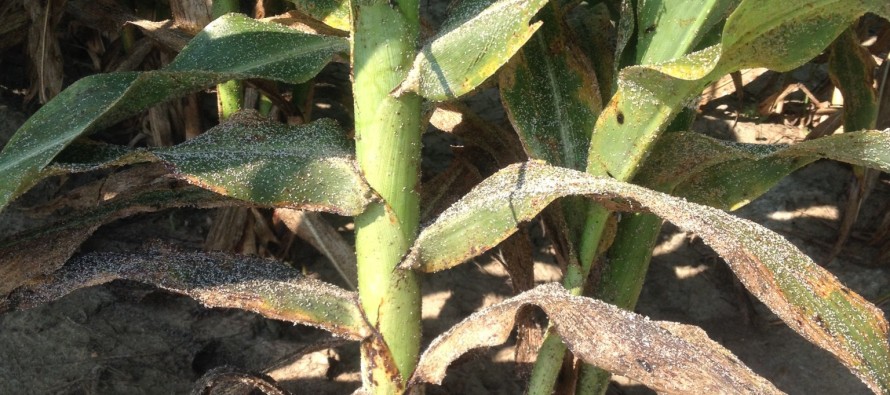Sugarcane Aphid Control with Falling Temperatures

Related Articles
- Mississippi Cotton Insect Situation of 2010: A Look Back 3
- Rice Insecticidal Seed Treatment Recommendations for Mississippi in 2011 0
- 2010 Row Crop Short Course Video Links 0
Latest Tweets
In 2014 we saw two brief time periods of less than satisfactory control with Transform on sugarcane aphids in grain sorghum across a broad geography. At the time we were mixing a lot of pyrethroids with Transform, so initial thoughts were that there might have been some antagonism. Subsequent testing did not indicate that this was the case. Control seemed to go back to normal then we saw a “glitch” a few weeks later again in a number of fields. One thing different this time was that we were also seeing a decline in efficacy of Transform in numerous cotton fields with applications targeting cotton aphids. Looking back the only factors that seemed to correlate to widespread control problems were cooler than normal temperatures.
The following data was generated by one of our graduate students, Mrs. Brittany Lipsey, who is working on sugarcane aphids in grain sorghum. Brittany just completed a bioassay where we applied Transform @ 1 oz. and Sivanto at 4 oz. (4 reps) at 10 GPA with hollow cone nozzles to heading grain sorghum. Leaf disc were pulled from upper leaves in each plot at 0 hours, 24 hours, 3 days, 5 days, 7 days, and 10 days after treatments. Leaf disc were divided into two groups and placed in growth chambers at 85 and 60 degree Fahrenheit and infested with aphids and mortality was observed at 48 hours.
This data should be considered preliminary but because temperatures are dropping into the upper 50’s in Mississippi this week and numerous aphid applications are still being made in grain sorghum, we felt that we needed to go ahead and get this data out now.
Bottom line is this: Efficacy of Transform and Sivanto may be affected greatly by cool temperatures. This likely has little to do with the insecticide but rather the aphids themselves. We suspect that the aphids have slowed down their activity and feeding and are likely not taking the products up as well resulting in poor control. Keep in mind, we are NOT saying that you will not get any control or that you may experience a control failure at all. However, we have seen an above average number of complaints during similar and simulated conditions. I would target applications around the heat of the day to maximize control or try and hold off till the weekend when temps increase again if possible. Because the aphids are not actively feeding during these cooler temperatures, the populations are not likely to “blow up” nearly as fast as we see them do at warmer temperatures. Because of that, there is a lower threat to holding off on applications for a few days if numbers are not high.






Let me tell You a sad story ! There are no comments yet, but You can be first one to comment this article.
Write a comment